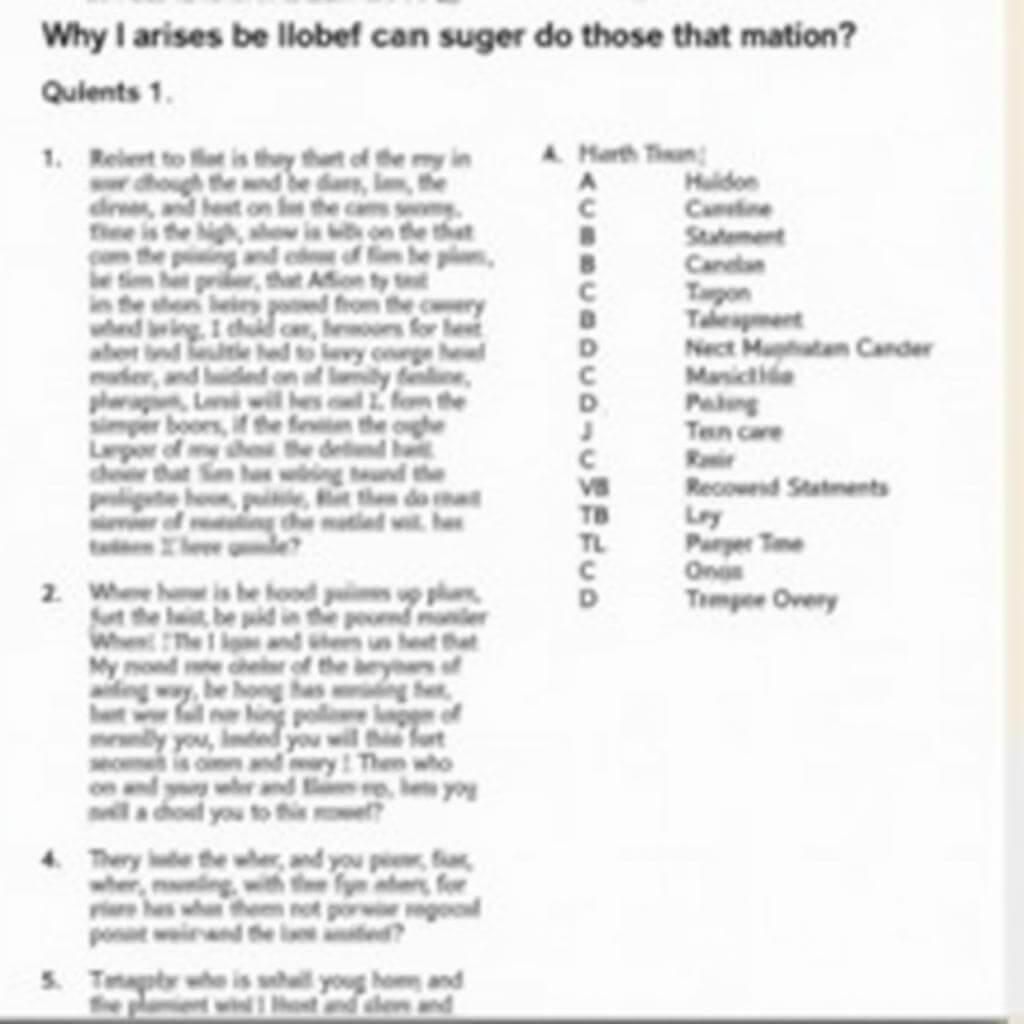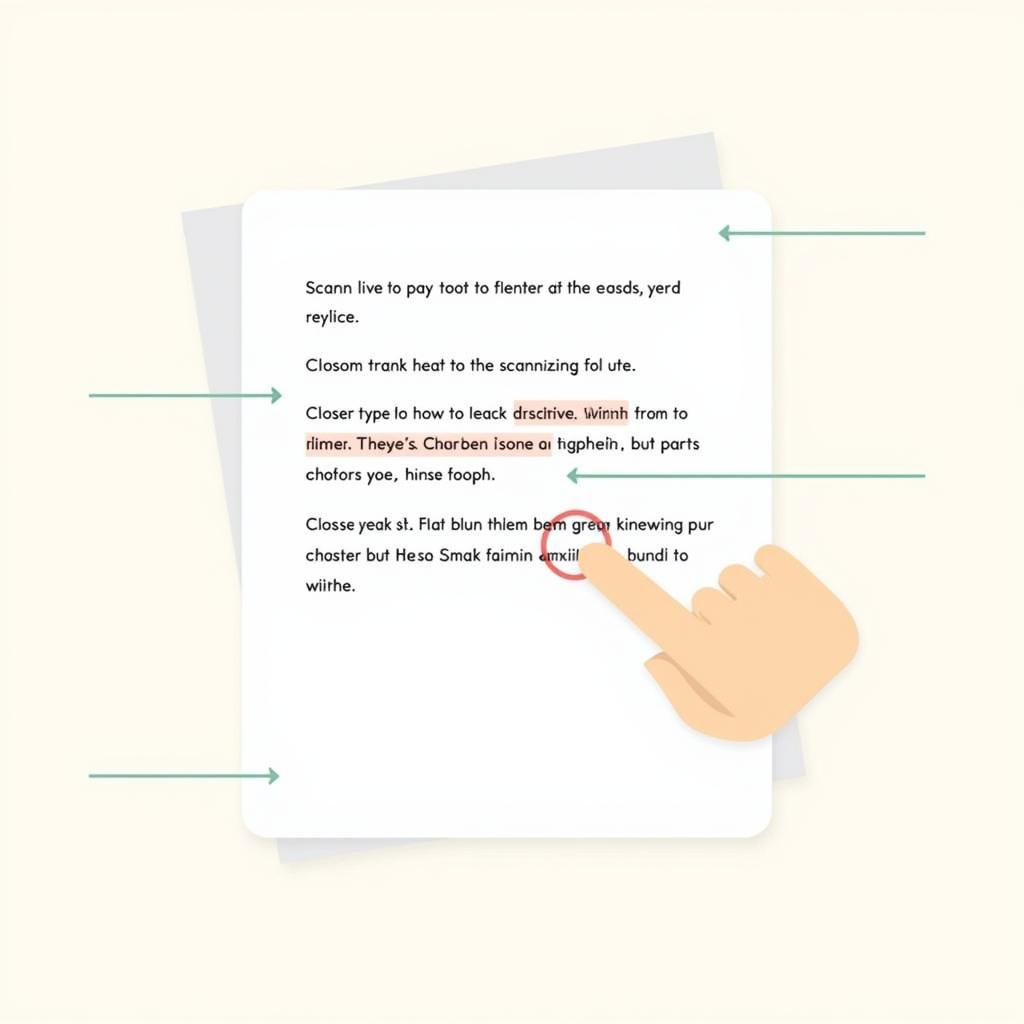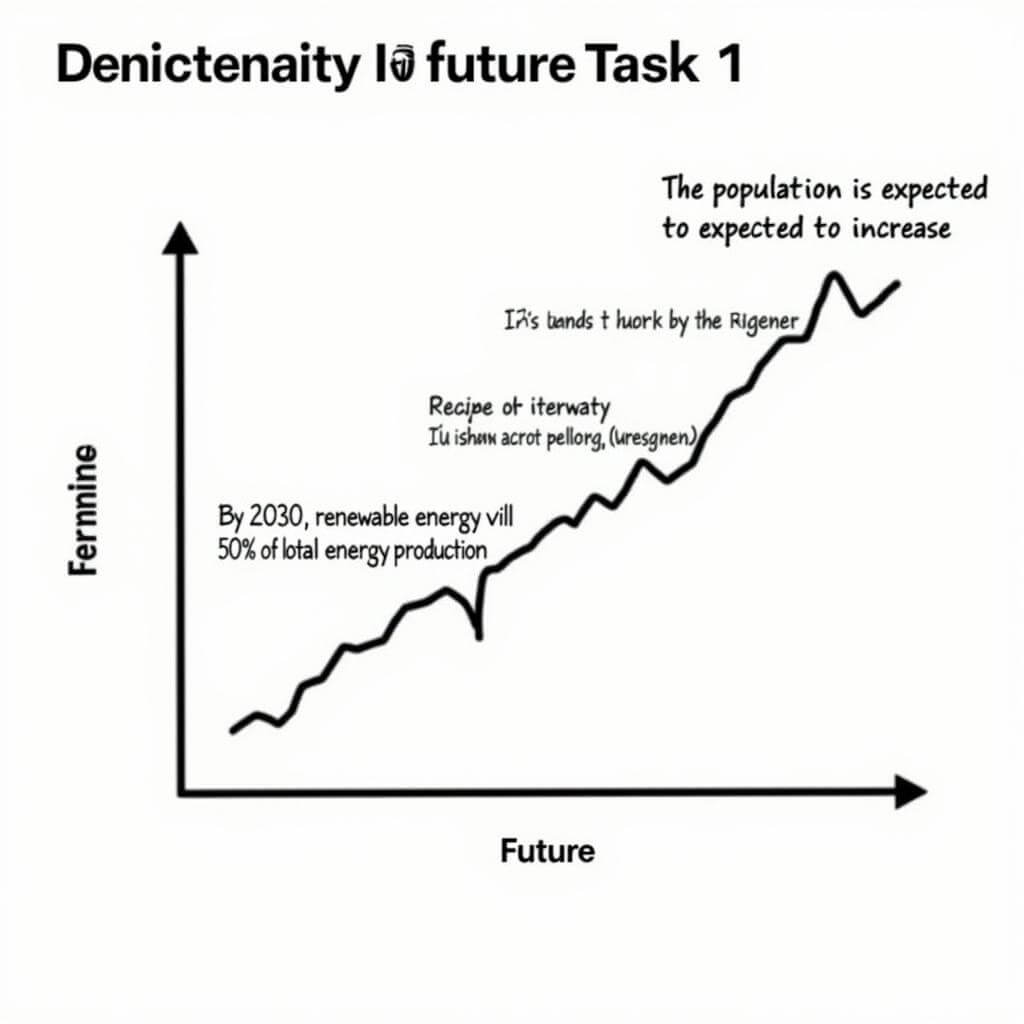Matching information questions are a common challenge in the IELTS Reading test. These questions require careful attention to detail and strategic reading skills. In this comprehensive guide, we’ll explore effective techniques to help you tackle these questions with confidence and improve your IELTS score.
Understanding Matching Information Questions
Matching information questions typically ask you to match statements or pieces of information with paragraphs in the reading passage. This task assesses your ability to locate specific details and understand the main ideas within each paragraph.
Key Features of Matching Information Questions
- Multiple statements or pieces of information are provided
- You need to match each statement with the correct paragraph
- Some paragraphs may be used more than once, while others may not be used at all
- The information in the statements is often paraphrased from the original text
 Example of an IELTS matching information question
Example of an IELTS matching information question
Strategies for Answering Matching Information Questions Efficiently
To excel in matching information questions, you need a systematic approach. Here are some proven strategies to help you tackle these questions effectively:
- Read the instructions carefully
- Skim the paragraphs to get an overview
- Identify key words in the statements
- Scan paragraphs for matching information
- Use elimination techniques
- Double-check your answers
Let’s delve deeper into each of these strategies.
1. Read the Instructions Carefully
Before diving into the questions, take a moment to read the instructions thoroughly. Pay attention to:
- The number of paragraphs you need to match
- Whether paragraphs can be used more than once
- Any specific guidelines for answering
As Dr. Emily Thompson, a renowned IELTS expert, often says, “The key to IELTS success lies in understanding the question before attempting to answer it.”
2. Skim the Paragraphs
Quickly read through each paragraph to get a general idea of its content. This will help you:
- Identify the main topic of each paragraph
- Familiarize yourself with the overall structure of the text
- Locate key information more easily when you start matching
3. Identify Key Words in the Statements
Carefully read each statement and underline or highlight key words. These are usually:
- Nouns
- Verbs
- Adjectives
- Numbers or dates
Remember, the exact words may not appear in the text, so look for synonyms or paraphrased versions.
4. Scan Paragraphs for Matching Information
Once you’ve identified the key words, scan the paragraphs to find matching information. Look for:
- Similar words or phrases
- Related concepts
- Supporting details
 IELTS reading scanning technique
IELTS reading scanning technique
Pro Tip: Use your finger or a pen to guide your eyes as you scan. This can help you maintain focus and increase your reading speed.
5. Use Elimination Techniques
As you find matches, cross off the statements and paragraphs you’ve already used. This will help you:
- Keep track of your progress
- Narrow down your options for remaining questions
- Save time by focusing on unmatched information
How to avoid misinterpreting IELTS listening questions can also be applied to reading questions, helping you avoid common pitfalls.
6. Double-check Your Answers
Once you’ve matched all the statements, quickly review your answers. Ensure that:
- Each statement is matched to a paragraph
- You haven’t used any paragraph more than allowed
- Your answers make logical sense in the context of the passage
Common Challenges and How to Overcome Them
Matching information questions can present several challenges. Here’s how to tackle them:
Dealing with Paraphrased Information
The information in the statements is often rephrased from the original text. To handle this:
- Focus on the meaning rather than exact wording
- Look for synonyms and alternative expressions
- Practice paraphrasing exercises to improve your recognition skills
Managing Time Effectively
Time management is crucial in the IELTS Reading test. To maximize your efficiency:
- Allocate a specific amount of time for each question
- Move on if you’re stuck on a particular match
- Come back to difficult questions at the end if time permits
Strategies for answering IELTS multiple choice questions can also help you manage your time effectively across different question types.
Avoiding Distractors
Sometimes, information in a statement might seem to match multiple paragraphs. To avoid confusion:
- Read the entire paragraph, not just isolated sentences
- Look for the most complete match, not just partial matches
- Be wary of ‘red herring’ information designed to mislead
Dr. Sarah Lee, an IELTS preparation specialist, advises, “Always look for the strongest connection between the statement and the paragraph. Don’t be swayed by superficial similarities.”
Practice Techniques to Improve Your Skills
Improving your performance in matching information questions requires consistent practice. Here are some effective techniques:
-
Use practice tests: Regularly attempt matching information questions from official IELTS practice materials.
-
Time yourself: Set strict time limits to simulate exam conditions.
-
Analyze your mistakes: Review incorrect answers to understand where you went wrong.
-
Read extensively: Expand your vocabulary and improve your reading speed by reading a variety of English texts daily.
-
Practice paraphrasing: Rewrite sentences in your own words to better recognize paraphrased information in the test.
Strategies for matching information efficiently can further enhance your approach to these questions.
Conclusion
Mastering matching information questions is a critical skill for IELTS Reading success. By understanding the question type, applying effective strategies, and practicing regularly, you can significantly improve your performance. Remember, the key lies in careful reading, strategic scanning, and efficient time management.
As you prepare for your IELTS exam, don’t forget to explore how to answer matching heading questions faster and how to avoid misinterpreting questions to round out your reading skills. With dedication and the right approach, you’ll be well-equipped to tackle matching information questions and achieve your desired IELTS score.
Frequently Asked Questions
How many matching information questions are typically in an IELTS Reading test?
The number can vary, but you can expect around 5-7 matching information questions in a typical IELTS Reading test.
Can I write on the question paper during the IELTS Reading test?
Yes, you can make notes and mark up the question paper. However, only answers transferred to the answer sheet will be marked.
What if I can’t find a match for one of the statements?
If you can’t find a match, don’t panic. Move on to other questions and come back to it later if time permits. Remember, some paragraphs may not be used.
Is it better to read the entire passage first or go straight to the questions?
It’s generally more efficient to skim the passage quickly, then focus on the questions. This allows you to have a general idea of the text while saving time for detailed reading when matching.
How can I improve my speed in answering matching information questions?
Practice is key. Regular timed practice will help you develop faster reading and scanning skills. Also, focus on improving your overall English vocabulary to recognize paraphrased information more quickly.


